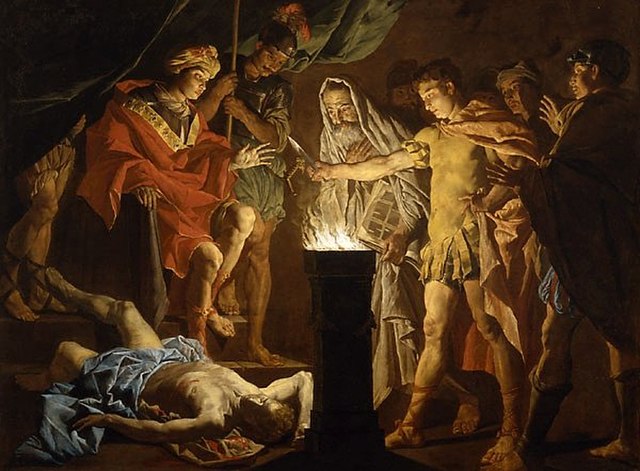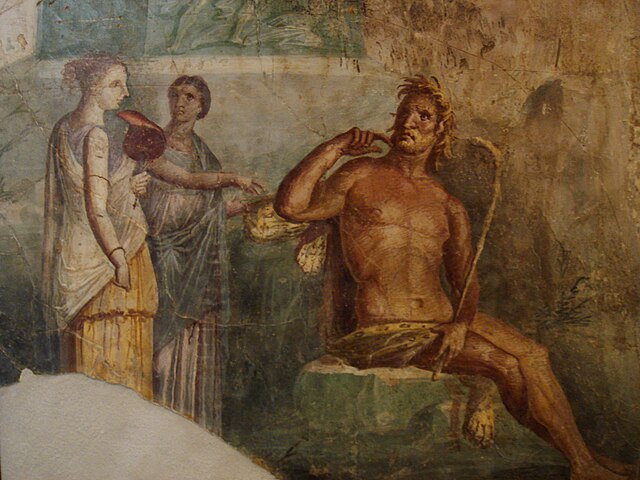Roman mythology is the body of myths of ancient Rome as represented in the literature and visual arts of the Romans. One of a wide variety of genres of Roman folklore, Roman mythology may also refer to the modern study of these representations, and to the subject matter as represented in the literature and art of other cultures in any period. Roman mythology draws from the mythology of the Italic peoples and ultimately from Proto-Indo-European mythology.
Romulus and Remus, the Lupercal, Father Tiber, and the Palatine on a relief from a pedestal dating to the reign of Trajan (AD 98–117)
In this wall painting from Pompeii, Venus looks on while the physician Iapyx tends to the wound of her son, Aeneas; the tearful boy is her grandson Ascanius, also known as Iulus, legendary ancestor[citation needed] of Julius Caesar and the Julio-Claudian dynasty
Mucius Scaevola in the Presence of Lars Porsenna (early 1640s) by Matthias Stom
Polyphemus hears of the arrival of Galatea; ancient Roman fresco painted in the "Fourth Style" of Pompeii (45–79 AD)
Myth is a genre of folklore or theology consisting primarily of narratives that play a fundamental role in a society, such as foundational tales or origin myths. For scholars, this is very different from the vernacular usage of the term "myth" that simply refers to something that is not true. Instead, the truth value of a myth is not a defining criterion.
Odysseus Overcome by Demodocus' Song, by Francesco Hayez, 1813–1815
Ballads of bravery (1877) part of Arthurian mythology
Opening lines of one of the Mabinogi myths from the Red Book of Hergest (written pre-13c, incorporating pre-Roman myths of Celtic gods): Gereint vab Erbin. Arthur a deuodes dala llys yg Caerllion ar Wysc... (Geraint the son of Erbin. Arthur was accustomed to hold his Court at Caerlleon upon Usk...)
Myths and legends of Babylonia and Assyria (1916)








